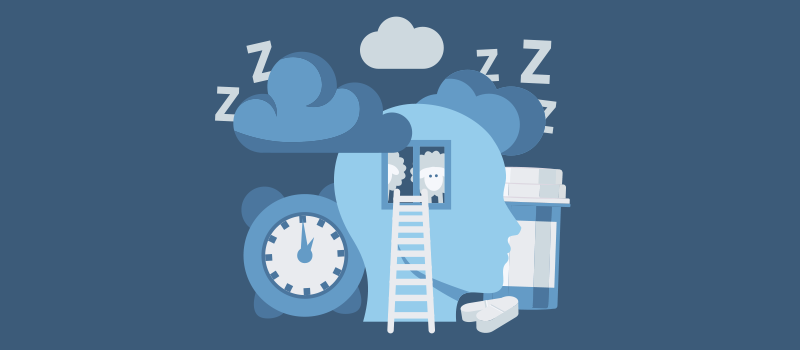What’s the Buzz
The Bee Healthy Blog
Narcolepsy Treatment: Modafinil vs. Armodafinil

Narcolepsy is a chronic (long-lasting) sleep disorder that can seriously disrupt daily life. People with this medical condition suffer from excessive daytime sleepiness and sudden attacks of sleep. Affected individuals struggle with staying awake for long periods regardless of the circumstances.
While there is no cure for narcolepsy, the condition can be treated. Lifestyle changes and medications can help manage the symptoms of excessive sleepiness. Two wakefulness-promoting agents commonly used to treat narcolepsy are modafinil (brand name Provigil) and armodafinil (brand name, Nuvigil). These medications help people with narcolepsy feel more alert and stay awake.
Please continue reading to learn more about armodafinil and modafinil, including how they are similar, how they are different, and which one—armodafinil/modafinil—may be right for you.
Modafinil and armodafinil - What are these medications?
Armodafinil and modafinil are both wakefulness-promoting agents that have stimulant-like effects. Armodafinil is the R-isomer of racemic modafinil. Meaning, they have the same chemical structures but with a slightly different arrangement of structures. Similar to how the thumb on your left hand is on the left, and the thumb on your right hand is on the right. Both modafinil/armodafinil are Schedule IV drugs that have a low potential for abuse and dependence. Both medications are available by prescription only.
The exact mechanisms of how armodafinil and modafinil work is unknown. It is believed that these medications affect sleep-promoting neurons in the brain. Scientists think they work by boosting dopamine levels in the parts of the brain that controls sleep and wakefulness. Dopamine is a naturally occurring brain chemical in the central nervous system that is involved in the sleep-wake cycle. Higher levels of dopamine during armodafinil/modafinil treatment can lead to improved wakefulness.
What are armodafinil and modafinil used to treat?
Armodafinil and modafinil are approved by the U.S. Food and Drug Administration (FDA) to treat the following conditions:
Narcolepsy (excessive sleepiness)
This chronic sleep disorder is characterized by overwhelming and excessive daytime sleepiness with sudden attacks of sleepiness regardless of circumstances.
Shift work sleep disorder (SWSD)
This is a sleep disorder of the circadian rhythm (day-night cycle). It affects people who work the night shift and stay awake during normal sleeping hours. Symptoms can include excessive sleepiness, insomnia (difficulty sleeping), or both.
Obstructive sleep apnea (OSA)
This is a sleep-related breathing disorder in which affected individuals repeatedly start and stop breathing during sleep.
All these sleep disorders—narcolepsy, shift work sleep disorder, and obstructive sleep apnea—are characterized by excessive sleepiness and feeling unrested. Both armodafinil and modafinil improve wakefulness in people who struggle with excessive daytime sleepiness and fatigue.
In addition to the above, armodafinil and modafinil are used off-label to treat cancer-related fatigue, fatigue related to multiple sclerosis, and in people with disorders like ADHD (attention deficit hyperactivity disorder) and depression.
How are armodafinil and modafinil different?
Armodafinil (R-modafinil) and modafinil are similar in many ways. Both are stimulant-like prescription drugs and are a type of sleep disorder medicine (wakefulness-promoting agent). They are available as oral tablets. Brand name and generic versions are available for both. They are prescribed to people over the age of 17 for narcolepsy, shift work disorder, and obstructive sleep apnea. They can be used long-term, as directed by a physician, to control symptoms of daytime sleepiness.
However, there are subtle differences between armodafinil and modafinil. As noted, armodafinil is the R-enantiomer of modafinil (you can think of it as a mirror image). So, the chemical structure is different. Armodafinil (Nuvigil) is a newer drug, approved in 2007, compared to modafinil (Provigil) which was FDA approved in 1998. The recommended dose of modafinil is 200 mg once a day, and armodafinil is 150 mg once a day.
The potential adverse effects and drug interactions of both drugs are similar. Common adverse effects of both medicines include headache, insomnia, dizziness, nausea, dry mouth, nervousness, weight loss, and diarrhea.
The incidences of side effects may be more common with one medication or the other, armodafinil versus modafinil. Serious but rare side effects are allergic reactions to either medications. Symptoms of an allergic reaction include shortness of breath, hives, swelling of face, tongue, and throat - This is a life-threatening medical emergency, you need to seek medical attention immediately. If you are allergic to modafinil, more than likely, you are allergic to armodafinil, and vice versa.
Is Nuvigil stronger than Provigil?
Both medications are FDA-approved and have similar wakefulness effects. However, a critical difference between armodafinil and modafinil is the pharmacodynamic effects. It is believed that armodafinil has a longer half-life. Meaning, pharmacokinetic studies show that it stays in the body longer. Studies have shown that there are higher plasma concentrations (armodafinil levels) in the body later in the day. Armodafinil can therefore produce longer-lasting effects and better wakefulness than modafinil.
Studies comparing armodafinil to modafinil have also shown that a 150 mg single dose of armodafinil produces effects comparable to a 200 mg single dose of modafinil. Therefore, armodafinil may be the stronger medication on a milligram to milligram basis. In other words, armodafinil administration may be more effective than modafinil administration in treating daytime sleepiness in people with sleep disorders.
With that said, there are currently no studies on modafinil/armodafinil that clearly say one drug is definitively more effective than the other. However, randomized clinical trials and meta-analyses have found that armodafinil and modafinil have comparable efficacy and safety profiles in treating sleep disorders. Both medicines significantly improve excessive sleepiness and sleep latency (the amount of time taken to fall asleep). Patients with narcolepsy, shift work disorder, and obstructive sleep apnea tolerate both medications well.
A deciding factor between armodafinil versus modafinil may be the cost of treatment. Generic armodafinil is more expensive than generic modafinil. However, generic armodafinil may be slightly less expensive than brand name Provigil. It is best to consult a doctor to decide between the two medications for the treatment of sleep disorders or address any other concerns that you may have.
How effective is modafinil for narcolepsy?
More than one clinical trial has shown that modafinil and armodafinil significantly improved sleepiness in healthy subjects with acute sleep loss in a nocturnal period, i.e., short-term sleep deprivation.
Modafinil has been clinically proven to be effective in treating sleepiness associated with narcolepsy. It can also help people with shift work disorder and obstructive sleep apnea. Provigil (modafinil) starts working 30-60 minutes after you take the medication, a bit longer if you take it with food. Notably, modafinil has fewer side effects and is better tolerated than traditional stimulant drugs such as Adderall and Vyvanse.
Keep in mind that modafinil or armodafinil may not completely treat your symptoms. You may have some excessive residual sleepiness.
Can you sleep on armodafinil?
Armodafinil is an effective treatment for excessive sleepiness and daytime sleepiness. It can help you stay awake and alert for 12-15 hours at a time. You should take your medication as directed by your physician. If you are using this medicine to treat narcolepsy or obstructive sleep apnea, you will probably be advised to take it in the morning. If you are taking it for shift work disorder, you should take it one hour before your shift starts to prevent excessive sleepiness while at work.. Since they both are wakefulness-promoting agents, taking modafinil and armodafinil before bed will cause trouble falling asleep.
Keep in mind that while armodafinil can help you stay awake, it is not a substitute for getting enough sleep. You should continue to practice good sleep habits. You should also continue to use any breathing devices like a CPAP machine prescribed by your doctor for obstructive sleep apnea.
Does armodafinil cause euphoria?
Armodafinil is not known to cause euphoria (feeling high). It is a Schedule IV substance with a low potential for abuse and dependence. However, armodafinil does have psychoactive effects and can affect your mood since it affects the dopamine level in your brain.
References:
- https://www.mayoclinic.org/diseases-conditions/narcolepsy/symptoms-causes/syc-20375497
- https://www.ncbi.nlm.nih.gov/pmc/articles/PMC3135062/
- https://link.springer.com/chapter/10.1007/978-3-319-23739-8_23
- https://pubmed.ncbi.nlm.nih.gov/26923035/
- https://www.ncbi.nlm.nih.gov/pmc/articles/PMC3286657/
- https://pubmed.ncbi.nlm.nih.gov/16393442/











SOCIAL